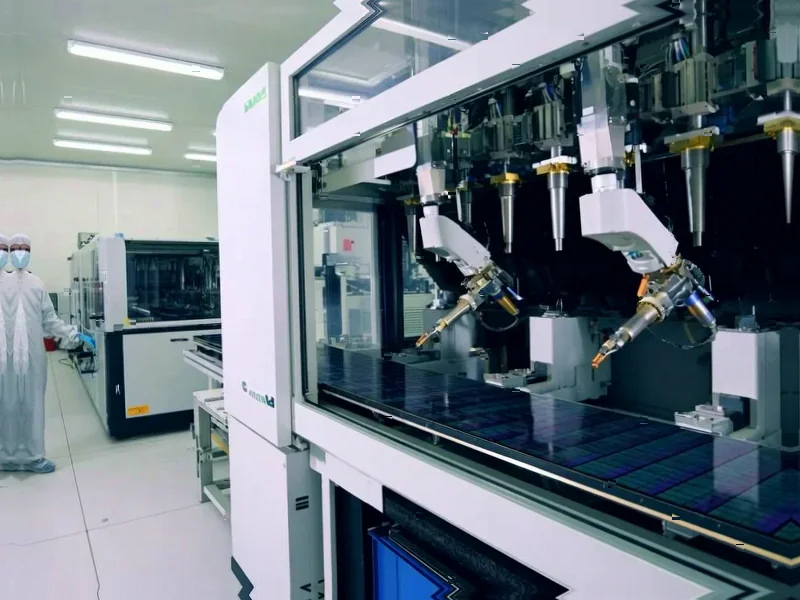According to Wccftech, NVIDIA CEO Jensen Huang revealed that the company’s push to manufacture high-end AI chips in America wouldn’t have been possible without Taiwanese partners. Within just nine months, NVIDIA achieved volume production of its advanced Blackwell AI chips completely in the United States through collaboration with TSMC, Foxconn, Wistron, Amkor, and SPIL. Huang specifically praised TSMC as an “incredible partner for the United States” during a Fox News interview. The rapid manufacturing turnaround involved workers across multiple disciplines working around the clock to establish facilities. President Trump has congratulated NVIDIA on this achievement, which signals the US potentially emerging as a manufacturing hub for sophisticated chips.
The Geopolitical Tightrope
Here’s the thing that makes this so fascinating: NVIDIA is walking a political tightrope while stating the obvious. On one hand, they’re celebrating the “Made in USA” narrative that plays well domestically. But Huang is being remarkably candid about how dependent this achievement is on Taiwanese companies. Basically, you can’t just snap your fingers and rebuild decades of semiconductor expertise overnight. TSMC’s Arizona facility has been absolutely crucial here – they’re the ones actually manufacturing these cutting-edge chips. Without them, NVIDIA would be stuck with much less advanced US-based fabs.
What This Means for Global Supply Chains
So what’s really happening here? We’re seeing a massive, accelerated reshuffling of the semiconductor supply chain. Taiwanese companies aren’t just supplying chips anymore – they’re building the entire manufacturing ecosystem in the US. Foxconn and Wistron are bringing assembly lines, Amkor is handling advanced packaging (which is a huge bottleneck), and TSMC is doing the actual chip fabrication. This isn’t just about one company or one product line – it’s about creating an entire resilient supply chain that can operate independently of Asia if needed. And honestly, given the geopolitical tensions around Taiwan, that redundancy is becoming increasingly valuable for everyone involved.
Winners and Losers in This Shift
The big winners here are clearly NVIDIA and TSMC. NVIDIA gets political goodwill and supply chain security, while TSMC expands its global footprint and reduces its concentration risk in Taiwan. But what about the losers? Other chip manufacturers who were hoping to capitalize on US reshoring efforts might find themselves playing catch-up. And countries that were positioning themselves as alternative manufacturing hubs might see investment dollars flowing back to the US instead. The real question is whether this marks a permanent shift or just strategic diversification. Can the US really compete on cost and scale long-term against established Asian manufacturing bases? That remains to be seen, but with players like TSMC bringing their expertise stateside, the odds are looking better than they have in decades.
Looking Ahead
Now, the timeline here is what’s truly staggering – nine months from concept to volume production of the world’s most advanced AI chips. That’s practically lightning speed in semiconductor terms. It shows what’s possible when you combine American engineering with Taiwanese manufacturing expertise. But let’s be real – this isn’t just about making chips faster. It’s about building an entire ecosystem that can withstand geopolitical shocks. As Huang noted in his Fox News interview, this achievement required incredible coordination across multiple companies and thousands of workers. The bigger story here might be that we’re witnessing the birth of a new, more distributed global semiconductor industry – one where “Made in USA” and “Made with Taiwan” aren’t mutually exclusive but actually complementary.




